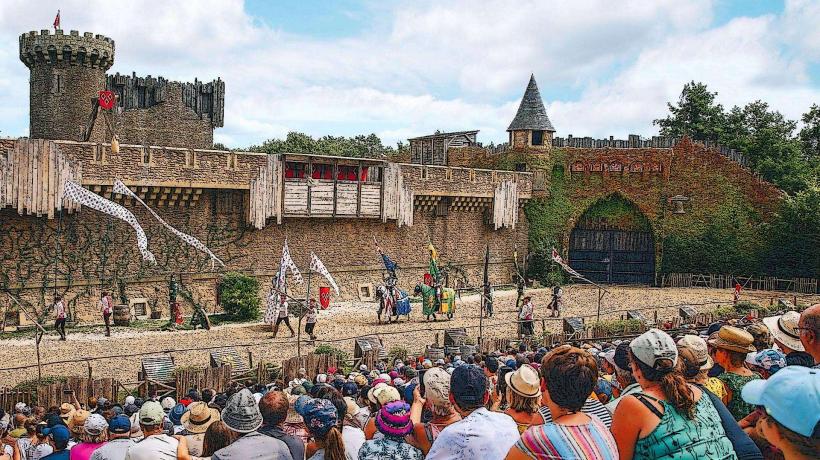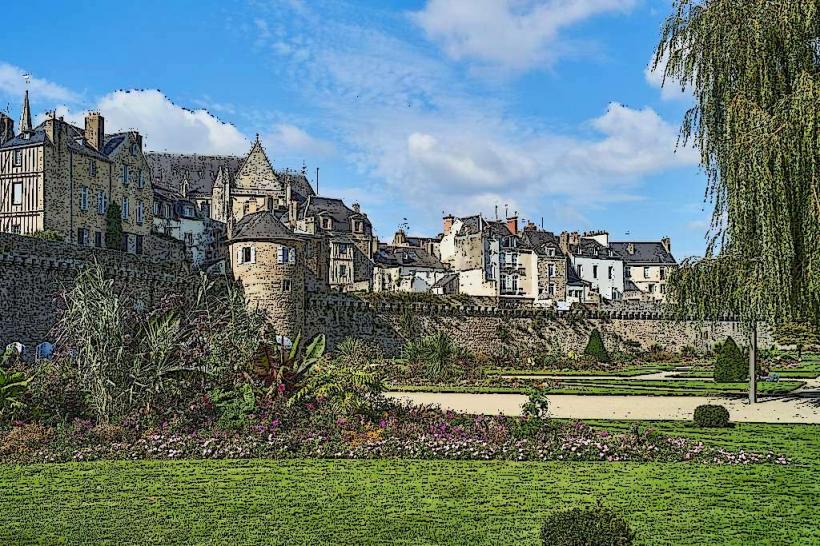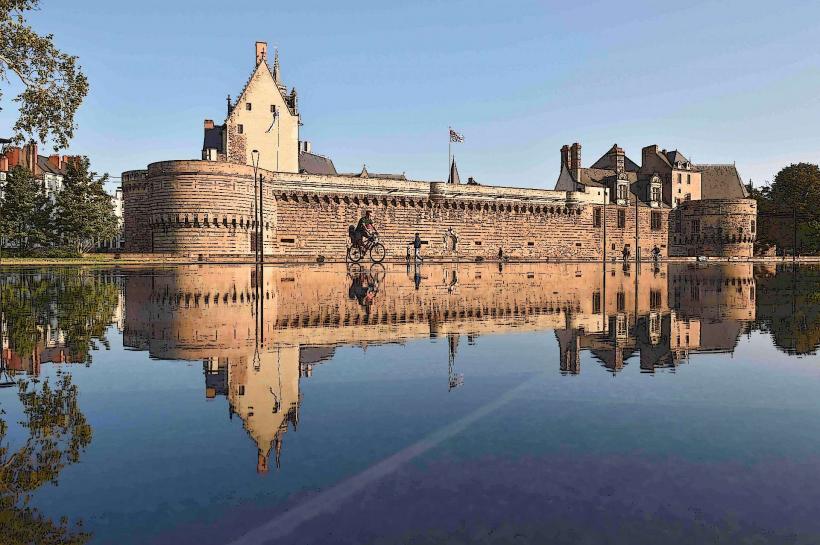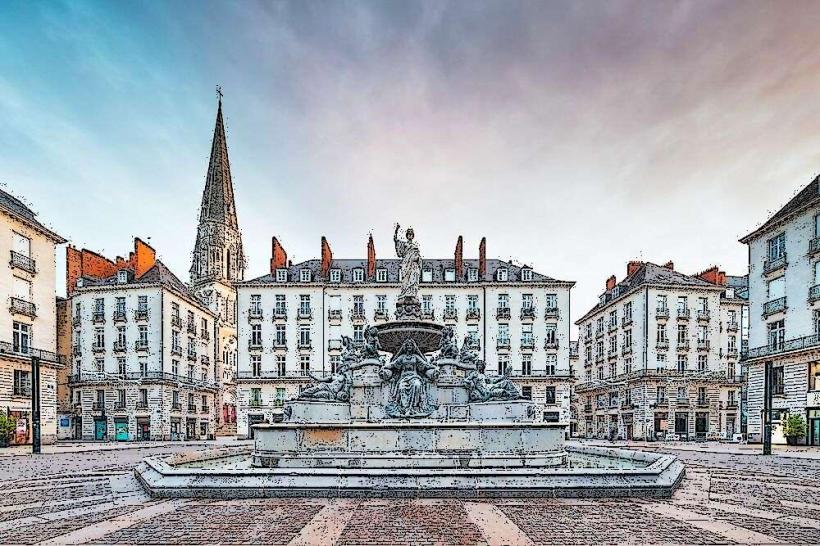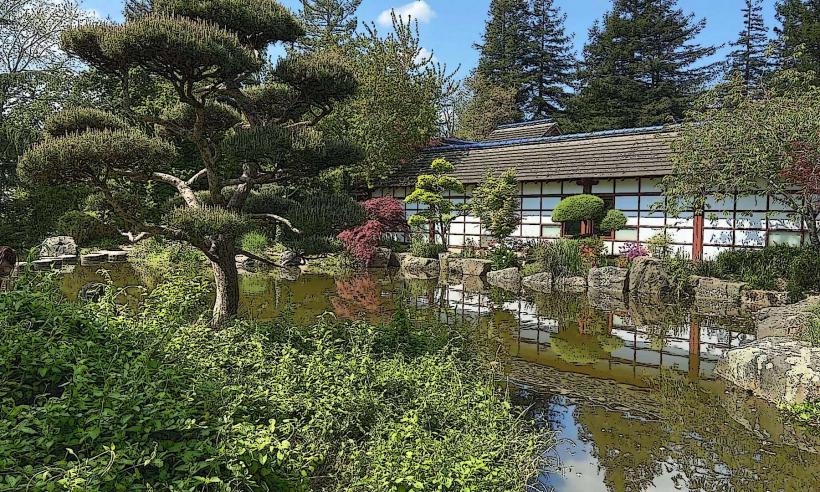Information
Landmark: Chateau de L HermineCity: Nantes
Country: France
Continent: Europe
Château de l'Hermine is a historic castle located in Vannes, in the Brittany region of France. The castle is notable for its rich history, once serving as the residence of the Dukes of Brittany and playing a key role in the medieval and Renaissance periods. It stands as an important landmark in Vannes, offering visitors a glimpse into the region's aristocratic past.
Key Features and History of Château de l'Hermine:
1. Historical Significance
- The Château de l'Hermine was built in the 15th century as a royal residence for the Dukes of Brittany, during a time when the Duchy of Brittany was a powerful and semi-independent state before it was united with France.
- It is associated with the Duchess Anne of Brittany, who played a pivotal role in the history of Brittany. She was twice married to the Kings of France and worked to preserve the autonomy of her duchy.
2. Architecture and Design
- The château is a fortified residence that blends medieval and Renaissance architectural styles, reflecting the changing tastes and political power of the period.
- The main structure of the castle is a large stone building, featuring round towers, fortifications, and a central courtyard. It is a fine example of the military architecture of its time.
- The interior features rooms with rich wood paneling, stone floors, and period furnishings, offering a glimpse into the life of the nobility during the Renaissance.
3. Role as a Political Center
- The château was not only a residence but also an important political center in the region. It was used by the Dukes of Brittany to hold court and conduct official matters.
- It became especially significant during the reign of Duke Francis II and his daughter, Anne of Brittany, as they navigated the complex political landscape of the time, particularly with France.
4. Later History and Decline
- In the 17th century, the château fell into disrepair and was no longer used as a royal residence. It was repurposed for other uses, including serving as a court of justice.
- Over the centuries, the château suffered damage and underwent several transformations, leading to the loss of many of its original features.
5. Today: Cultural and Artistic Hub
- Today, the Château de l'Hermine no longer serves as a royal residence but is a cultural space in the heart of Vannes. The building has been renovated and restored in recent years, making it a vibrant venue for exhibitions, performances, and other cultural events.
- The castle's interior hosts regular art exhibitions, showcasing contemporary and local artists as well as events that reflect the historical heritage of Vannes and Brittany.
- The château also serves as a venue for concerts, theater performances, and festivals, contributing to the cultural life of Vannes.
6. Visitor Experience
- While the Château de l'Hermine is not a traditional tourist attraction with a large set of guided tours, it provides an enriching experience through its cultural programming and occasional events.
- The exhibitions and performances held at the château often highlight Brittany's history, art, and cultural traditions.
- Visitors can explore the castle’s courtyard, enjoy its historical ambiance, and participate in the activities organized throughout the year.
7. Location and Surroundings
- The château is situated near the center of Vannes Old Town, making it easily accessible to visitors exploring the historical heart of the city.
- Its proximity to the Gulf of Morbihan and other notable landmarks in Vannes adds to its appeal, as visitors can enjoy the stunning scenery and rich historical backdrop while touring the château.
Conclusion
The Château de l'Hermine is a historic treasure in Vannes, offering visitors insight into the rich history of Brittany’s nobility and its role in French history. Although much of the original structure has been altered over the centuries, the château continues to serve as a vibrant cultural hub, making it an important site for both history buffs and art enthusiasts alike.

